Fresh vs Dried Thyme: A Spicy Showdown Between Herb and Essence!
Table of Contents
- Introduction
- What Is Thyme Anyway?
- The Green Goodness – Fresh Thyme
- The Flavor Powerhouse – Dried Thyme
- Side-by-Side Comparison: Fresh vs Dried Thyme
- Pro Tips for Cooking with Thyme
- When to Use Which? The Ultimate Guide
- Flavor Magic: How to Substitute One for the Other
- Growing & Storing Thyme Like a Pro
- Conclusion
Introduction
Whether you're making a rustic stew, whipping up a batch of roasted potatoes, or simmering a classic tomato sauce, chances are you’ve come across a recipe that calls for thyme. But here's the spicy question: should you reach for fresh thyme from your garden or grab the jar of dried thyme tucked away in your spice rack?
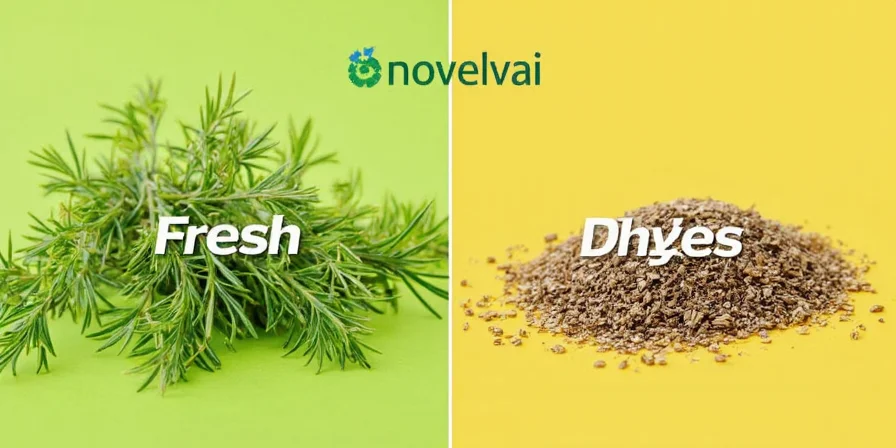
What Is Thyme Anyway?
Thyme (Thymus vulgaris) is a small, perennial herb native to the Mediterranean region. Known for its tiny, fragrant leaves and culinary versatility, it’s a staple in French, Italian, and Middle Eastern cuisines. Thyme also has historical significance — used by ancient Egyptians as part of embalming rituals and by Greeks as a symbol of courage.
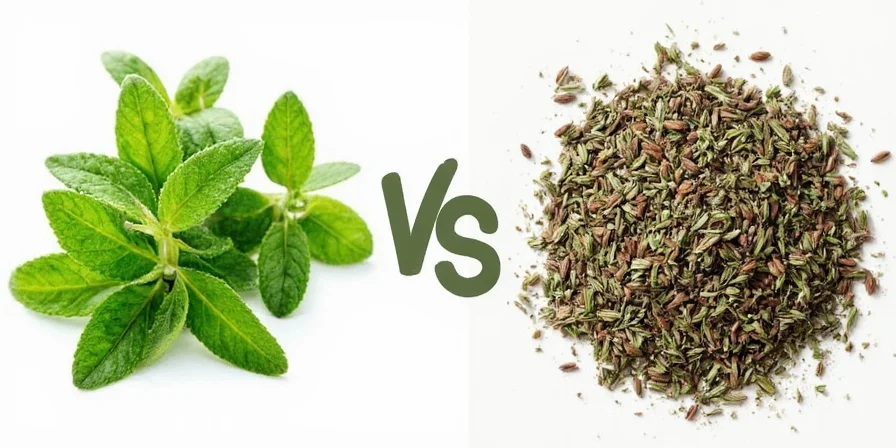
The Green Goodness – Fresh Thyme
Fresh thyme is like the cool kid at the herb party — vibrant, aromatic, and full of life. When you crush a leaf between your fingers, it releases a punchy, earthy scent that’s both minty and lemony. It’s got a subtler flavor than its dried cousin but brings freshness and brightness to dishes.
Pros:
- Lively aroma
- Perfect for garnishes
- Great in quick-cook recipes
Cons:
- Short shelf life
- Mild flavor intensity
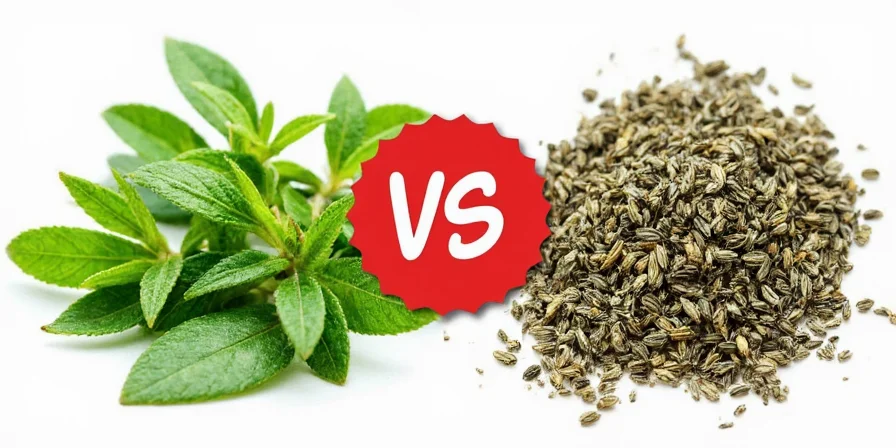
The Flavor Powerhouse – Dried Thyme
Dried thyme is like the seasoned warrior of the spice world — concentrated, bold, and always ready for action. Thanks to the dehydration process, its flavors become more intense and robust. If you want deep, lingering notes in long-simmered soups or braises, dried thyme is your best bet.
Pros:
- Longer shelf life
- Intense, concentrated flavor
- Ideal for slow-cooked dishes
Cons:
- Less aromatic
- No visual flair
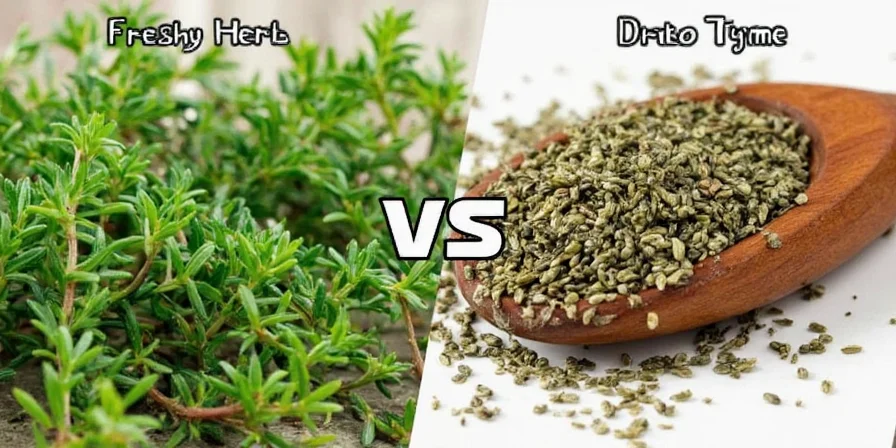
Side-by-Side Comparison: Fresh vs Dried Thyme
| Feature | Fresh Thyme | Dried Thyme |
|---|---|---|
| Aroma | Earthy, citrusy, floral | Woody, pungent |
| Flavor Intensity | Mild and subtle | Strong and concentrated |
| Best For | Garnishes, quick dishes, sauces | Stews, soups, baked goods |
| Shelf Life | 1–2 weeks (refrigerated) | 1–3 years |
| Texture | Soft and leafy | Dry and crumbly |
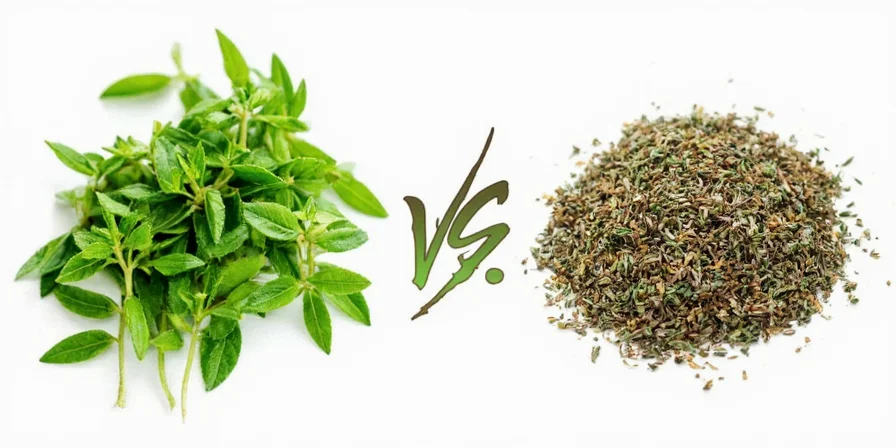
Pro Tips for Cooking with Thyme
- Add fresh thyme at the end – It loses potency when cooked too long.
- Strip the leaves before using – They’re easier to chew and blend better into dishes.
- Dried thyme loves heat – Let it simmer in soups or stews to release its oils.
- Don’t overdo it – Both can overpower a dish if used in excess.
- Infuse oils with thyme – Especially fresh, it adds depth to marinades and dressings.

When to Use Which? The Ultimate Guide
Choosing between fresh and dried thyme isn’t just about what you have on hand — it’s about what your dish deserves. Here’s a quick cheat sheet to help you decide:
- Use fresh thyme when:
- You want a pop of green color.
- Preparing short-cooked dishes (like sautés, omelets, or grilled veggies).
- Using it as a garnish or topping.
- Use dried thyme when:
- You're cooking something slowly (like chili, casseroles, or meatloaf).
- You want a deep, lingering flavor.
- You’re out of fresh herbs and still want to add herbal flair.
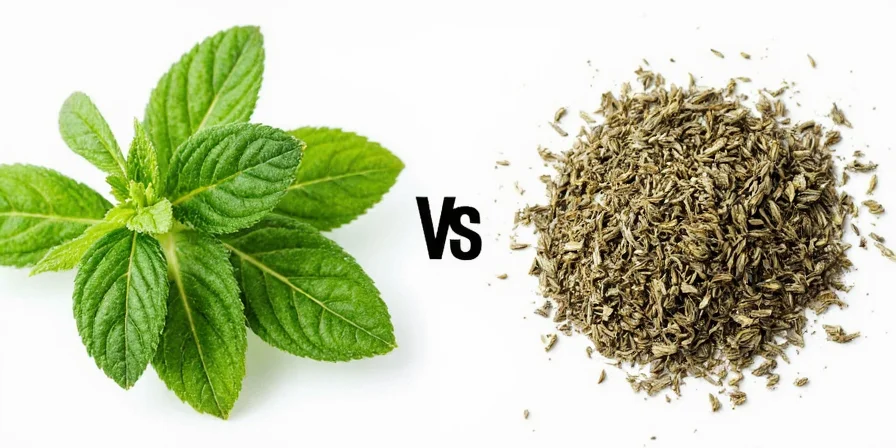
Flavor Magic: How to Substitute One for the Other
Let’s say you’re halfway through making your famous herbed potato mash and realize you only have dried thyme. Panic not! You can easily swap one for the other — but with a twist.
- 1 tablespoon fresh thyme = 1 teaspoon dried thyme
This is because dried thyme is more potent and less voluminous. So if a recipe calls for 1 tablespoon of fresh thyme and all you have is the dried kind, use just a teaspoon instead.
Flip side? If a recipe says “1 tsp dried thyme” and you want to use fresh, go with about 1 tablespoon chopped fresh leaves. Boom! You just saved dinner without even breaking a sweat.
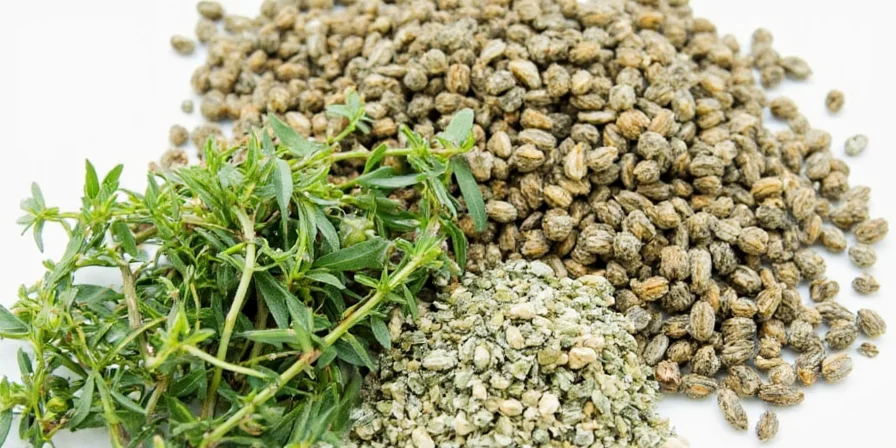
Growing & Storing Thyme Like a Pro
If you've ever considered growing your own thyme — and why wouldn’t you? — here’s how to do it right:
- Grow in well-draining soil – Thyme hates soggy roots.
- Give it sun! – At least 6 hours a day makes for happy plants.
- Harvest often – It encourages new growth and keeps the plant bushy.
And for storage:
- Fresh thyme: Wrap it in a damp paper towel and store in a sealed bag in the fridge. Or stick it in a cup of water like a bouquet.
- Dried thyme: Keep it in an airtight container, away from light and heat. Label it with the date so you know when it’s time to refresh your stash.
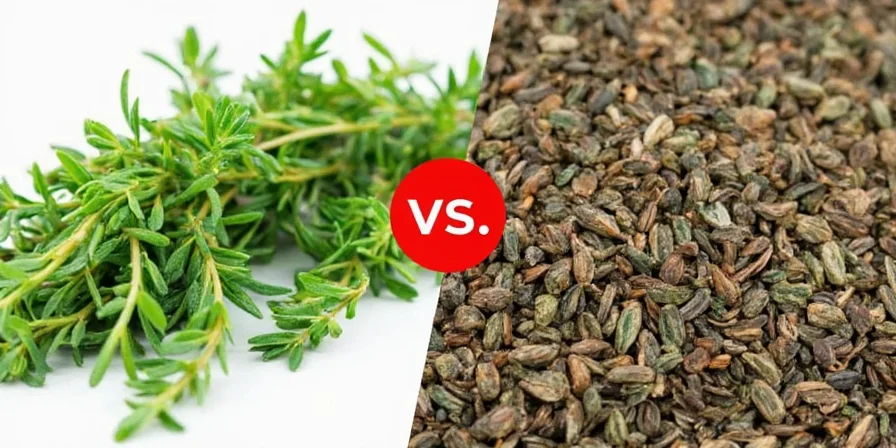
Conclusion
So, who wins in the fresh vs dried thyme showdown? Well, they both bring something unique to the table — literally. Think of them as two versions of the same flavorful character: fresh is your charismatic chef de cuisine, while dried is the wise old sous-chef who knows all the secrets.
Now that you’ve got the inside scoop on which thyme to choose and when, you’re ready to season with confidence. Your dishes will thank you, your taste buds will sing, and your spice rack might just get a little more organized.
Happy cooking — and may your thyme be forever fragrant!
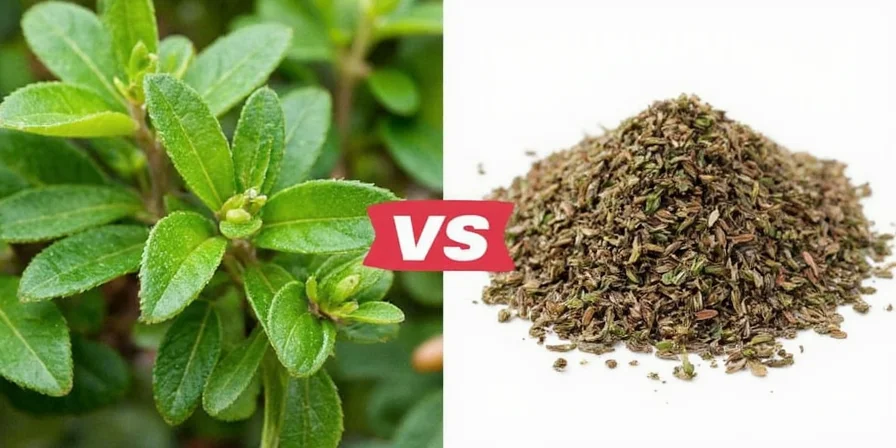

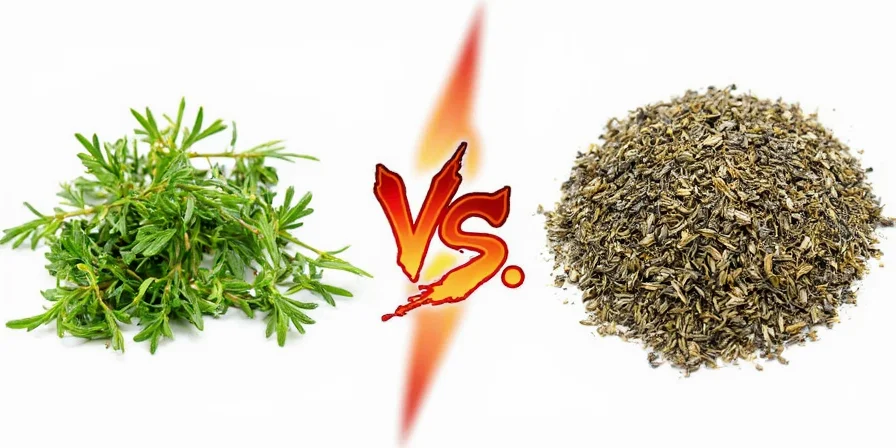









 浙公网安备
33010002000092号
浙公网安备
33010002000092号 浙B2-20120091-4
浙B2-20120091-4